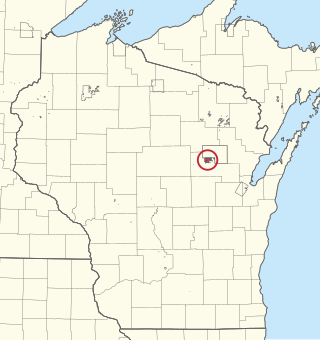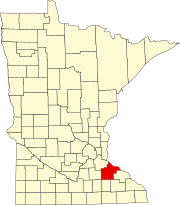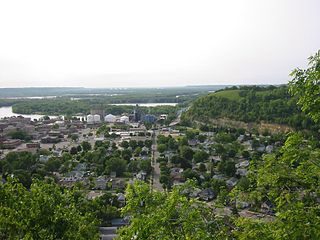
Red Wing is a city and the county seat of Goodhue County, Minnesota, United States, along the upper Mississippi River. The population was 16,547 at the 2020 census.

The L'Anse Indian Reservation is the land base of the federally recognized Keweenaw Bay Indian Community of the historic Lake Superior Band of Chippewa Indians.. The reservation is located primarily in two non-contiguous sections on either side of the Keweenaw Bay in Baraga County in the Upper Peninsula of the U.S. state of Michigan. The Keweenaw Bay Community also manages the separate Ontonagon Indian Reservation.

The Prairie Island Nuclear Generating Plant is an electricity-generating facility located in Red Wing, Minnesota, along the Mississippi River, and adjacent to the Prairie Island Indian Community reservation.

The White Earth Indian Reservation is the home to the White Earth Band, located in northwestern Minnesota. It is the largest Indian reservation in the state by land area. The reservation includes all of Mahnomen County, plus parts of Becker and Clearwater counties in the northwest part of the state along the Wild Rice and White Earth rivers. The reservation's land area is 1,093 sq mi (2,831 km²). The population was 9,726 as of the 2020 census, including off-reservation trust land. The White Earth Indian Reservation is one of six bands that make up the Minnesota Chippewa Tribe, their governing body for major administrative needs. It is about 225 miles (362 km) from Minneapolis–Saint Paul and roughly 65 miles (105 km) from Fargo–Moorhead.
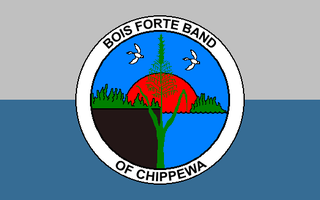
Bois Forte Indian Reservation is an Indian reservation formed for the Bois Forte Band of Chippewa.
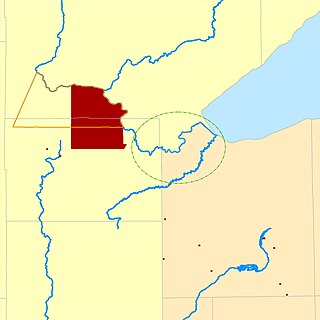
The Fond du Lac Indian Reservation is an Indian reservation in northern Minnesota near Cloquet in Carlton and Saint Louis counties. Off-reservation holdings are located across the state in Douglas County, in the northwest corner of Wisconsin. The total land area of these tribal lands is 154.49 square miles (400.1 km2). It is the land-base for the Fond du Lac Band of Lake Superior Chippewa. Before the establishment of this reservation, the Fond du Lac Band of Lake Superior Chippewa were located at the head of Lake Superior, closer to the mouth of the Saint Louis River, where Duluth has developed.
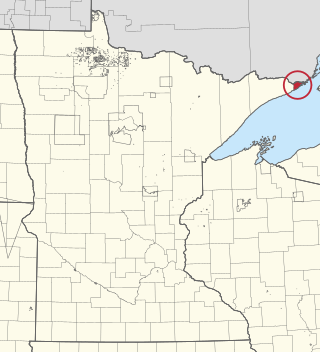
The Grand Portage Indian Reservation is the Indian reservation of the Grand Portage Band of Minnesota Chippewa Tribe, a federally recognized tribe in Minnesota.

The Leech Lake Reservation is an Indian reservation located in the north-central Minnesota counties of Cass, Itasca, Beltrami, and Hubbard. The reservation forms the land base for the federally recognized Leech Lake Band of Ojibwe, one of six bands comprising the Minnesota Chippewa Tribe, organized in 1934. The Leech Lake Reservation has the second highest population of any reservation in Minnesota with White Earth Nation being the largest Minnesota Ojibwe tribe, Leech Lake Nation has a resident population of 11,388 indicated by the 2020 census.
Mille Lacs Indian Reservation is the popular name for the land-base for the Mille Lacs Band of Ojibwe in Central Minnesota, about 100 miles (160 km) north of Minneapolis-St. Paul. The contemporary Mille Lacs Band reservation has significant land holdings in Mille Lacs, Pine, Aitkin and Crow Wing counties, as well as other land holdings in Kanabec, Morrison, and Otter Tail Counties. Mille Lacs Indian Reservation is also the name of a formal Indian reservation established in 1855. It is one of the two formal reservations on which the contemporary Mille Lacs Band retains land holdings. The contemporary Mille Lacs band includes several aboriginal Ojibwe bands and villages, whose members reside in communities throughout central Minnesota.

The Lower Sioux Indian Community, also known as the Mdewakanton Tribal Reservation, is an Indian reservation located along the southern bank of the Minnesota River in Paxton and Sherman townships in Redwood County, Minnesota. Its administrative headquarters is two miles south of Morton. The reservation is located southeast of Redwood Falls, the county seat.

The Shakopee Mdewakanton Sioux Community (SMSC) (Dakota: Bdemayaṭo Oyate) is a federally recognized, sovereign Indian tribe of Mdewakanton Dakota people, located southwest of Minneapolis and Saint Paul, within parts of the cities of Prior Lake and Shakopee in Scott County, Minnesota. Mdewakanton, pronounced Mid-ah-wah-kah-ton, means "dwellers at the spirit waters."
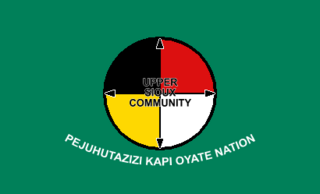
The Upper Sioux Indian Reservation, or Pezihutazizi in Dakota, is the reservation of the Upper Sioux Community, a federally recognized tribe of the Dakota people, that includes the Mdewakanton.

The Hannahville Indian Community is a federally recognized Potawatomi tribe residing in Michigan's Upper Peninsula, approximately 15 miles (24 km) west of Escanaba on a 8.5755-square-mile (22.210 km2) reservation. The reservation, at 45°46′59″N87°25′23″W, lies mostly in Harris Township in eastern Menominee County, but a small part is located in northeastern Gourley Township, also in Menominee County, and another in Bark River Township in adjacent southwestern Delta County.

The Menominee Indian Reservation is an Indian reservation located in northeastern Wisconsin held in trust by the United States for the Menominee Tribe of Wisconsin. It is the largest Indian reservation east of the Mississippi River. In the Menominee language, it is called Omāēqnomenēw-Otāēskonenan, "Menominee Thing Set Apart", or alternatively omǣqnomenēw-ahkīheh, "in the Menominee Country".

The Fort Peck Indian Reservation is located near Fort Peck, Montana, in the northeast part of the state. It is the home of several federally recognized bands of Assiniboine, Lakota, and Dakota peoples of Native Americans.
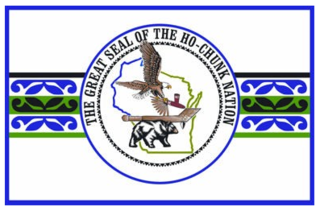
The Ho-Chunk Nation is a federally recognized tribe of the Ho-Chunk with traditional territory across five states in the United States: Wisconsin, Illinois, Iowa, Minnesota, and Missouri. The other federally recognized tribe of Ho-Chunk people is the Winnebago Tribe of Nebraska. The tribe separated when its members were forcibly relocated first to an eastern part of Iowa known as the Neutral Ground, then to Minnesota, South Dakota and later to the current reservation in Nebraska.

The Omaha Reservation of the federally recognized Omaha tribe is located mostly in Thurston County, Nebraska, with sections in neighboring Cuming and Burt counties, in addition to Monona County in Iowa. As of the 2020 federal census, the reservation population was 4,526. The tribal seat of government is in Macy. The villages of Rosalie, Pender and Walthill are located within reservation boundaries, as is the northernmost part of Bancroft. Due to land sales in the area since the reservation was established, Pender has disputed tribal jurisdiction over it, to which the Supreme Court ruled unanimously in 2016 that "the disputed land is within the reservation’s boundaries."

The Winnebago Reservation of the Winnebago Tribe of Nebraska is located in Thurston County, Nebraska, United States. The tribal council offices are located in the town of Winnebago. The villages of Emerson, south of First Street, as well as Thurston, are also located on the reservation. The reservation occupies northern Thurston County, Nebraska, as well as southeastern Dixon County and Woodbury County, Iowa, and a small plot of off-reservation land of southern Craig Township in Burt County, Nebraska. The other federally recognized Winnebago tribe is the Ho-Chunk Nation of Wisconsin.
















